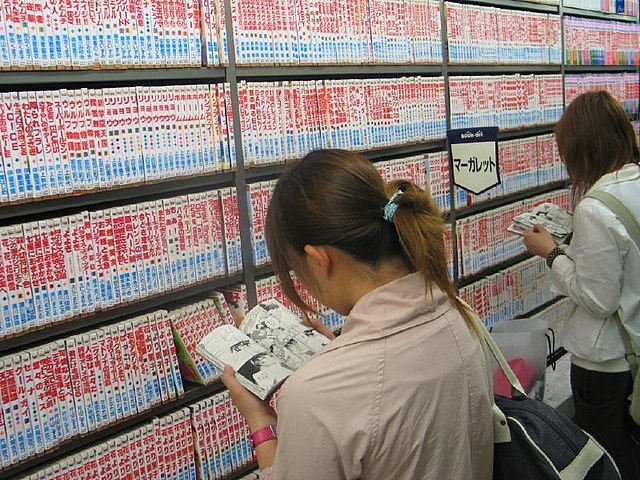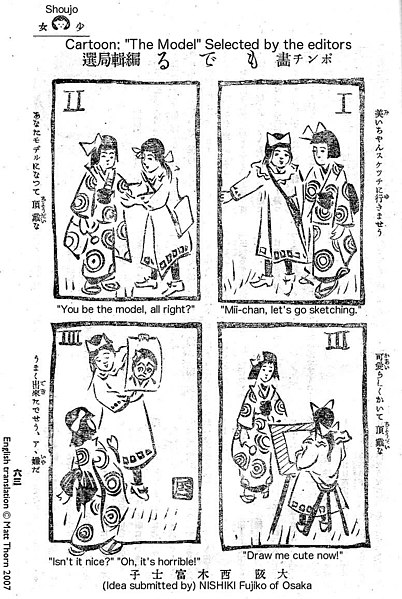Josei manga , also known as ladies' comics (レディースコミック) and its abbreviation redikomi , is an editorial category of Japanese comics that emerged in the 1980s. In a strict sense, josei refers to manga marketed to an audience of adult women, contrasting shōjo manga, which is marketed to an audience of girls and young adult women. In practice, the distinction between shōjo and josei is often tenuous; while the two were initially divergent categories, many manga works exhibit narrative and stylistic traits associated with both shōjo and josei manga. This distinction is further complicated by a third manga editorial category, young ladies (ヤングレディース), which emerged in the late 1980s as an intermediate category between shōjo and josei.
Mayu Shinjo, one of several artists who has authored both josei and shōjo manga
Shōjo manga is an editorial category of Japanese comics targeting an audience of adolescent females and young adult women. It is, along with shōnen manga, seinen manga, and josei manga, one of the primary editorial categories of manga. Shōjo manga is traditionally published in dedicated manga magazines, which often specialize in a particular readership age range or narrative genre.
Shelves of collected volumes of shōjo manga under the Margaret Comics imprint at a bookstore in Tokyo in 2004
Actress Hideko Takamine, portraying an archetypal shōjo wearing a sailor fuku in the 1939 film Hana Tsumi Nikki [ja]
Cover of the first issue of Shōjo-kai, 1902
A four-panel manga from the November 1910 issue of Shōjo (artist unknown). Note the henohenomoheji in the final panel.



![Actress Hideko Takamine, portraying an archetypal shōjo wearing a sailor fuku in the 1939 film Hana Tsumi Nikki [ja]](https://upload.wikimedia.org/wikipedia/commons/thumb/6/6a/Hideko_Takamine_in_Hana_tsumi_nikki%2C_1939_%28cropped%29.jpg/488px-Hideko_Takamine_in_Hana_tsumi_nikki%2C_1939_%28cropped%29.jpg)

